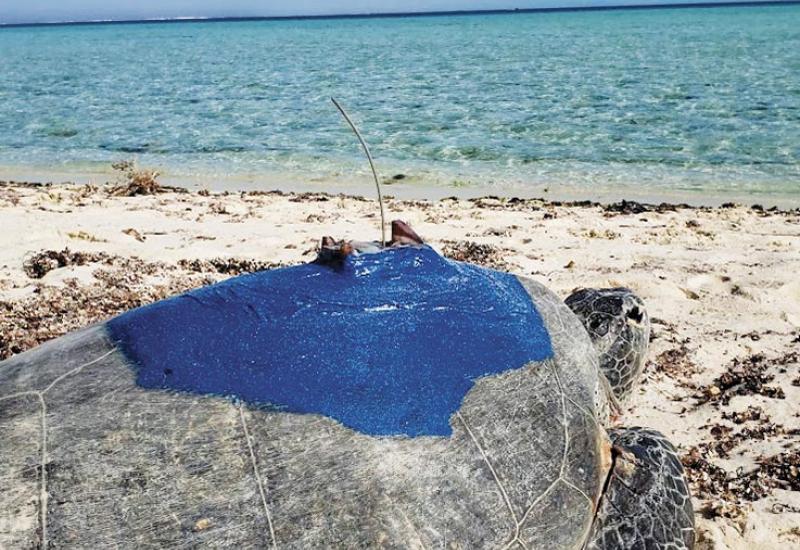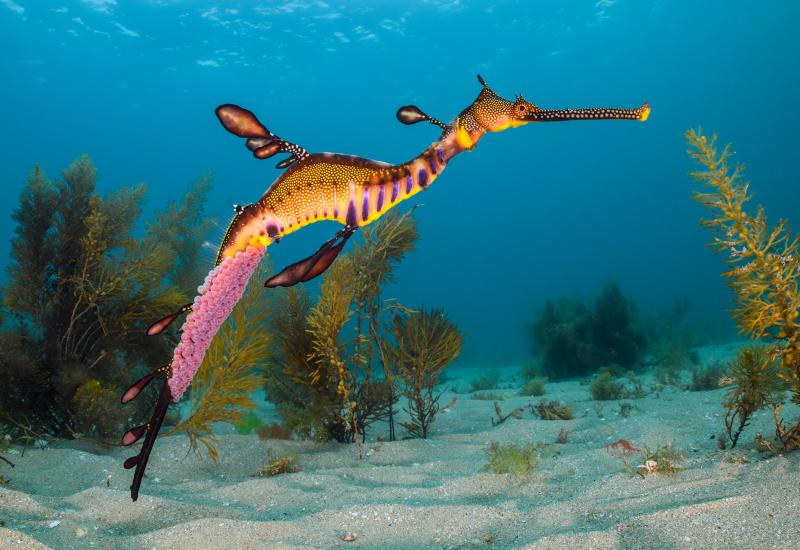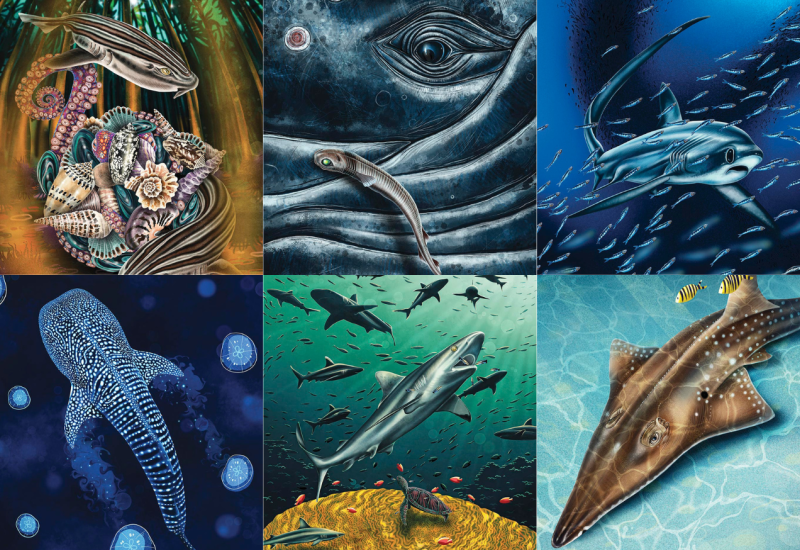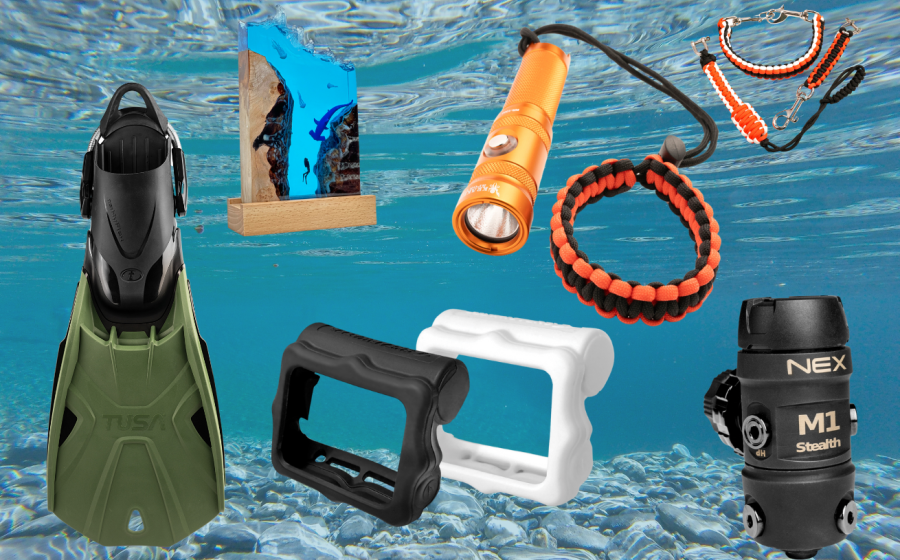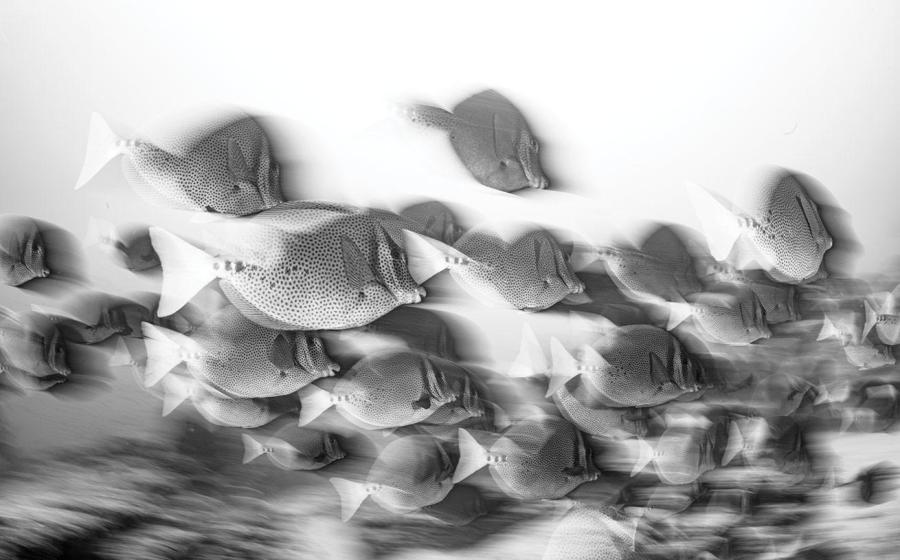13 Facts You Didn't Know About Butterflyfishes
These ornate, entertaining fishes are residents of coral reefs worldwide. Check out these 13 interesting facts about butterflyfishes.
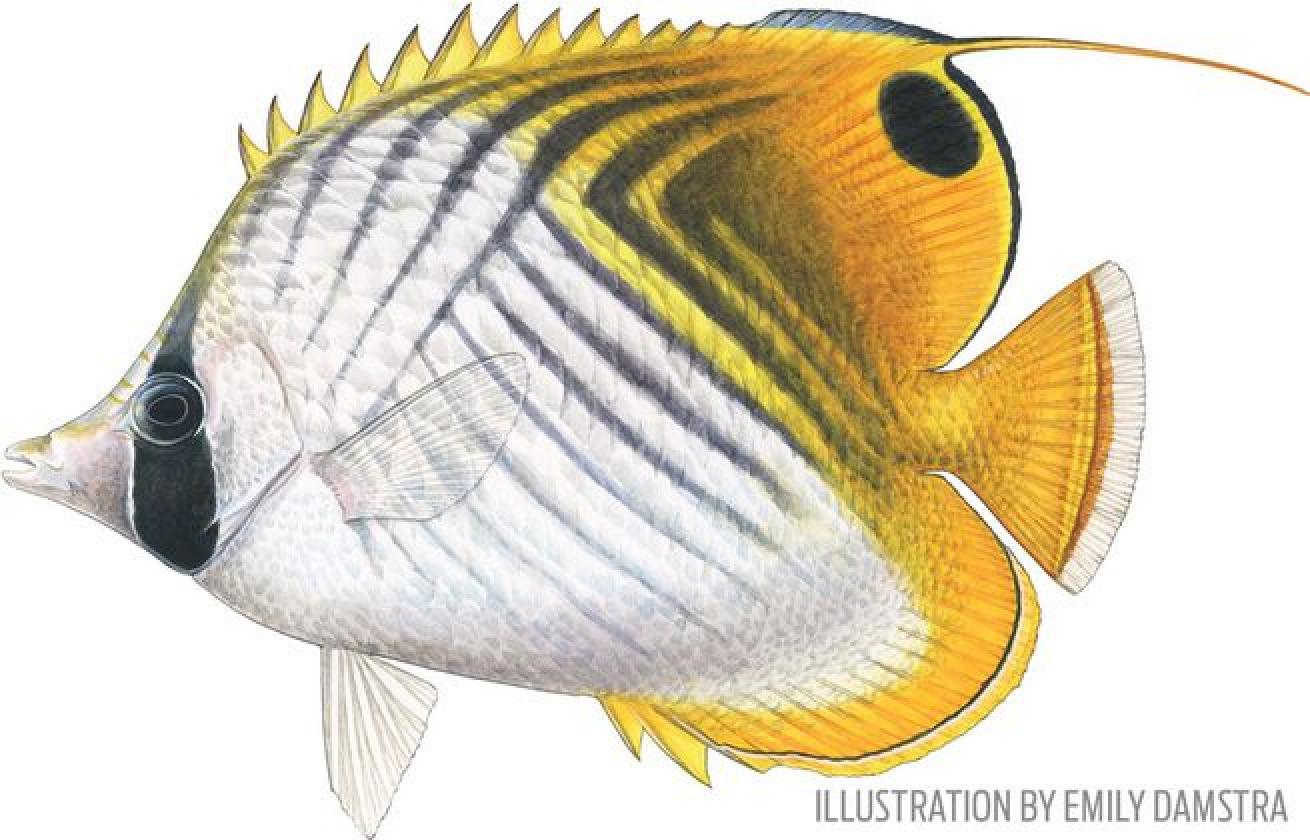
Emily DamstraThreadfin butterflyfish
The family Chaetodontidae — a combination of the ancient Greek words for “hair” and “tooth” — to which butterflyfishes belong, is named after their special comblike teeth. These fishes also have a protruding mouth, which helps them feed in crevices.
Butterflyfishes love snacks with a little crunch. Five thousand fishes are recorded from coral reefs, but only 41 feed directly on hard corals as their primary source of nutrition. Sixty percent of these are butterflyfishes.
Related Reading: The Enduring Anemone-Clownfish Connection
- A quarter of butterflyfishes are obligate corallivores, meaning they only feed on living coral polyps.
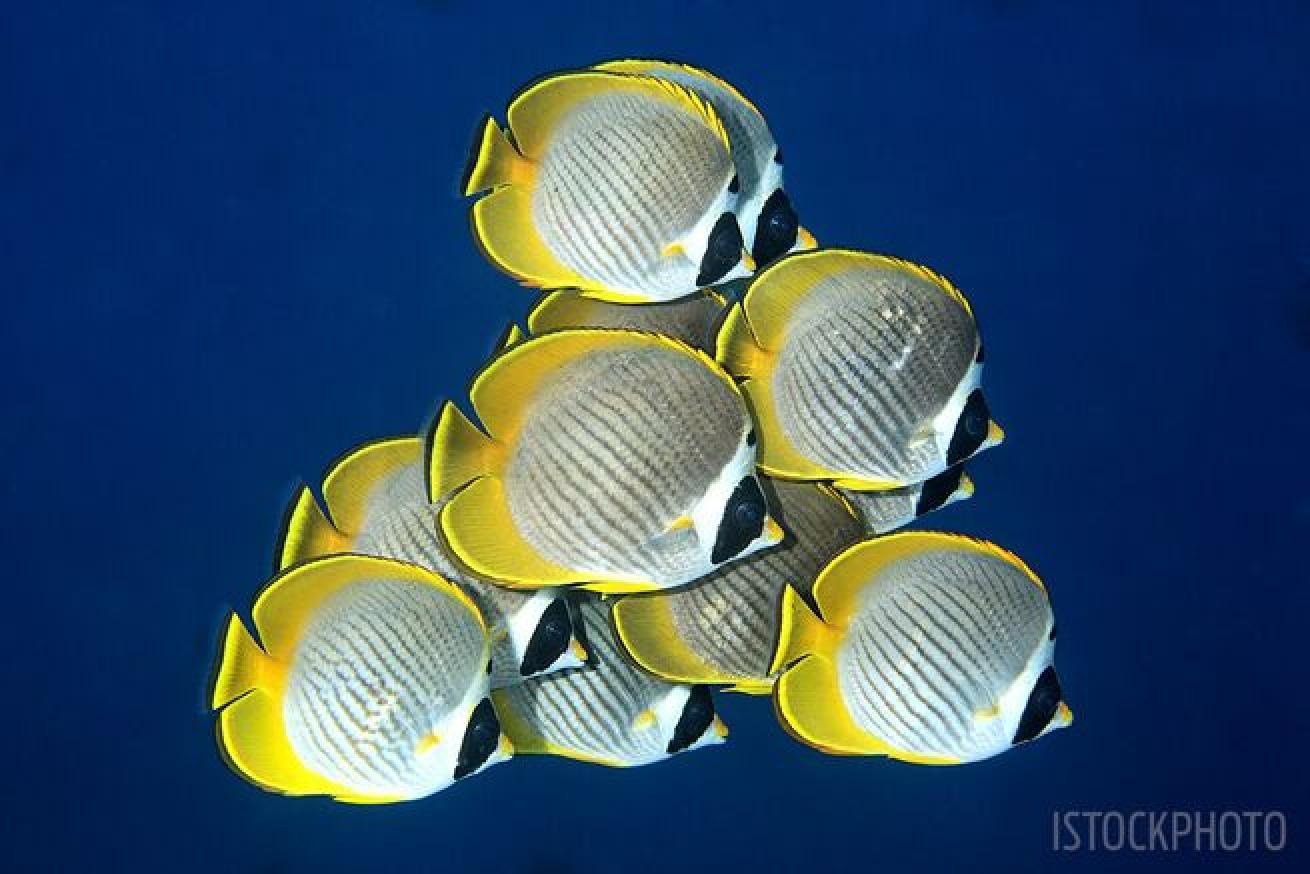
iStockphotoMany butterflyfishes only feed on living coral polyps.
Certain rare deepwater butterflyfishes are highly sought after in the aquarium trade. Wrought iron butterflyfish, found only around Japan’s Izu Islands, reportedly sell for $3,800.
Hybrids are rare in nature, but butterflyfishes are the most likely reef fish to breed with other species. The threadfin variety has been recorded hybridizing with at least seven other butterflyfishes.
Butterflyfishes make several sounds that can be used to ward off members of the same species and aid communication between a pair.
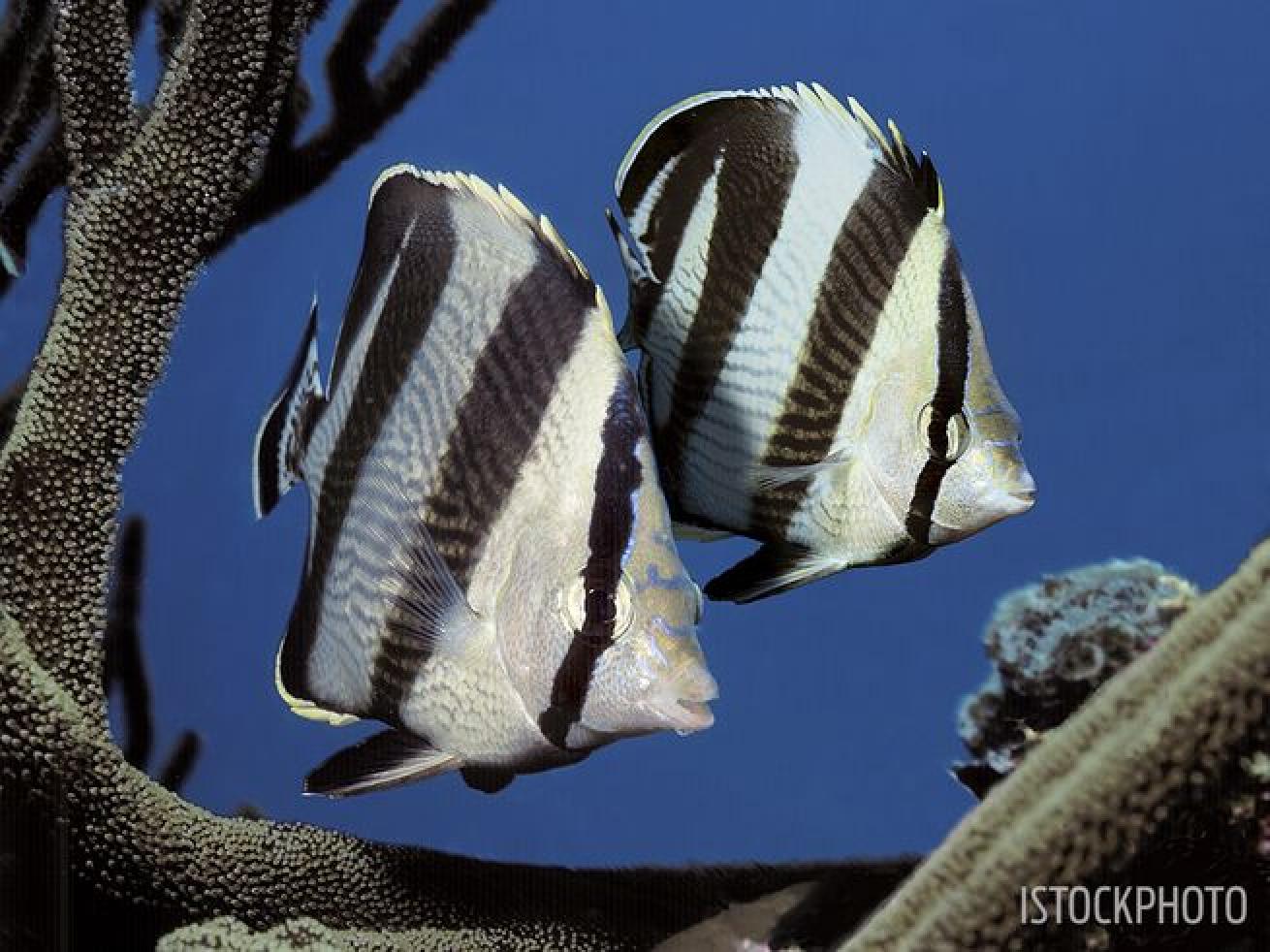
iStockphotoButterflyfishes make several sounds that can be used to ward off members of the same species.
Butterflyfishes that feed on coral polyps tend to be monogamous; the male defends the pair’s territory, allowing the female to feed.
The barberfish is a tropical eastern Pacific butterflyfish that cleans other fishes of their parasites. Its client list includes sharks and mantas.
The newest species of butterflyfish to be discovered was Basabe’s, found living at 180 feet off the northwestern Hawaiian Islands and named in 2016.
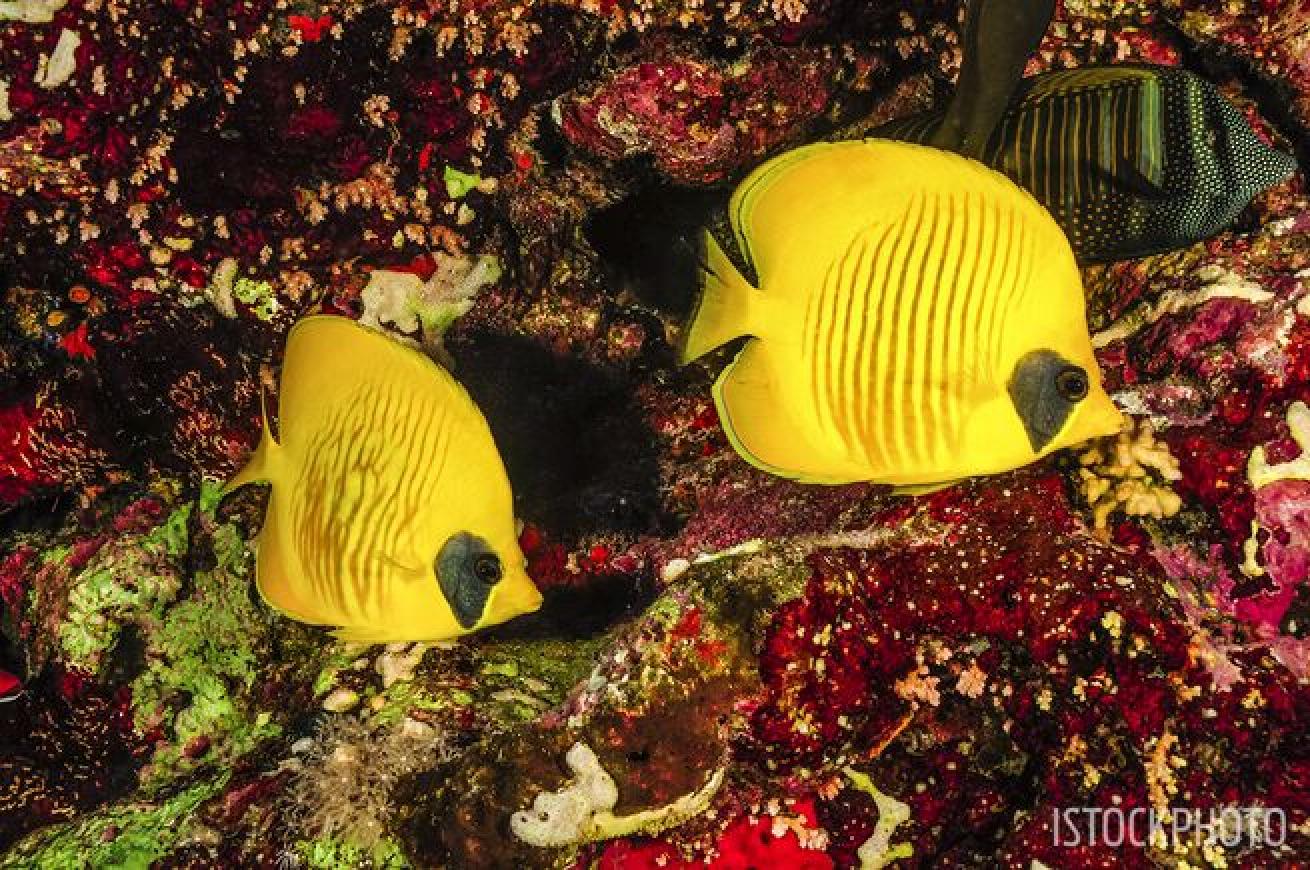
iStockphotoMany butterflyfishes form pair bonds, but others form aggregations hundreds strong.
Many butterflyfishes form pair bonds, but others form aggregations hundreds strong.
There are more than 130 species of butterflyfish throughout the world’s oceans; many live on coral reefs, but they also inhabit deeper waters.
Many butterflyfishes have a black stripe through the eye, to conceal it, and a fake eye spot near the tail. These both act to confuse would-be predators about which end is the head of the fish.
Related Reading: Why Do Fish Travel in Schools?
- If you see a large number of butterflyfishes on a dive, that’s a good sign for the coral reef. These fishes require large areas of healthy coral for food, and changes in their populations can be indicative of wider issues.
Follow Richard Smith’s underwater adventures at oceanrealmimages.com.

